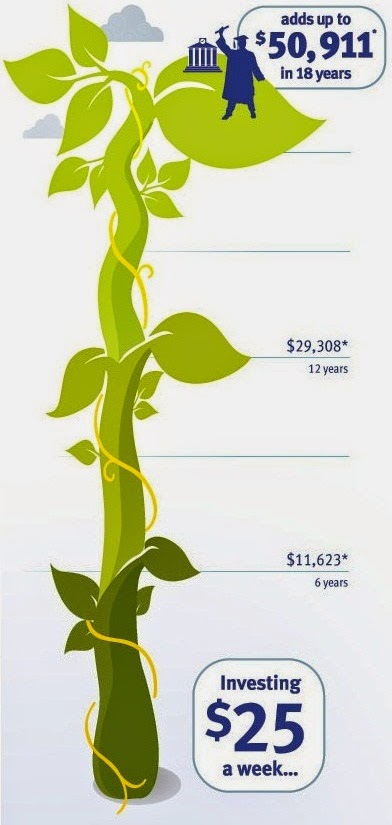Five Easy Tips to Encourage Your Child to Contribute to Their RESP

Saving for your child’s post secondary education can be daunting – not only for yourself but for your child as well. They are at an age where they may not yet understand personal finances and the financial obligation that goes along with attending post-secondary institutions. Personally, I did not understand the OSAP loans I signed off on at that time, and I wish I had paid more attention – or at the very least had a second check – to make sure I wasn’t making a mistake.
Saving is an essential part of life, and the earlier our children learn how to do it, the better it will be for them in the long run. Helping your child understand the importance of saving for their own education will not only give them pride in their accomplishment, but foster sound financial skills later in life. It will also encourage them to take control of their education, as they have more at stake when contributing their own finances.
An RESP is a helpful tool used by parents (or grandparents) to help finance higher education for their child. Opening an account is pretty straightforward, and involves contacting an RESP company (such as Heritage Education Funds) to set up an account. Once the account is open, growing the account is all up to you and your child!
Encouraging your child to contribute their own earned money towards their education is important, but may seem like a daunting task at the time, as your child has other priorities. Here are some helpful tips I have learned along the way to encourage your child to save towards their education in an RESP:
1. Take the first step in encouraging financial independence by setting up a bank account for your child. Both of my children have their own bank accounts, bank books and debit cards (the cards are mainly used for deposits and not purchases at this time) and this was a major stepping stone for them. I want them to understand finances, how money works and how quickly it can depart! Children need to appreciate the value of a dollar, as this will better help them appreciate the cost of their education.
2. Encourage your child to be part of the monthly family budget. An important part of attending a higher education institute is dealing with the extras: utilities, rent and groceries. This is one of the areas I lacked knowledge of when I went off to university. Since a portion of my RESP’s went to financing my room and utilities, I needed to understand how they worked and how to budget for these costs, but I had no clue. So of course I overspent in these areas and my budget never balanced.
3. Start up an allowance system for your child. Having a bi-weekly allowance for your child is important, regardless of their age. This allows your child to allocate their money for wants, needs and savings. Our boys put their savings into their RESPs at the end of the month. It’s important to let them view their statements, so they can see their education fund increase month to month. If there’s an online option, allow your child to view it monthly, so they learn to appreciate growth over time.
4. Once your child reaches the working stage, encourage them to contribute money to their RESP. This will probably be the hardest thing to do, but it is so important for them to save rather than splurge all that hard-earned money on clothes, movies or food. This is where all previous education on budgets, utilities and being involved in the family budget will pay off. Your child will have a greater appreciation for their pay cheque and will spend it wisely.
5. Have your child create their own post-secondary education budget. Sit down with them and help them figure out tuition, supplementary fees, textbook fees, rent and utilities (if they are moving away for school). Use this as a tool to figure out how much money should be contributed monthly into their RESP. This is an area I wish I had concentrated on more before I made my educational choices. I was never involved in the family budget prior to living on my own, so I had unrealistic expectations of the costs, which forced me to rely on loans.
Teaching our children how to save for their post-secondary education is an essential lesson that will help them later on in life as they leave our homes to start their own home.
To help you on this journey, you can now enter to WIN a $50 gift card from Tim Hortons sponsored by Heritage Education Funds. Contest is open to Canadian residents only and ends on May 17th, 2015.
How do you help encourage your child or teen to save towards their RESP and post-secondary education? Are they currently contributing to their own plan?
Make sure to follow Heritage Education Funds on Facebook and Twitter to keep up-to-date with news and advice for planning for your child’s educational future.
Disclosure: I am a Heritage Mom and receive perks associated with this affiliation. All opinions expressed are my own.











.gif)





